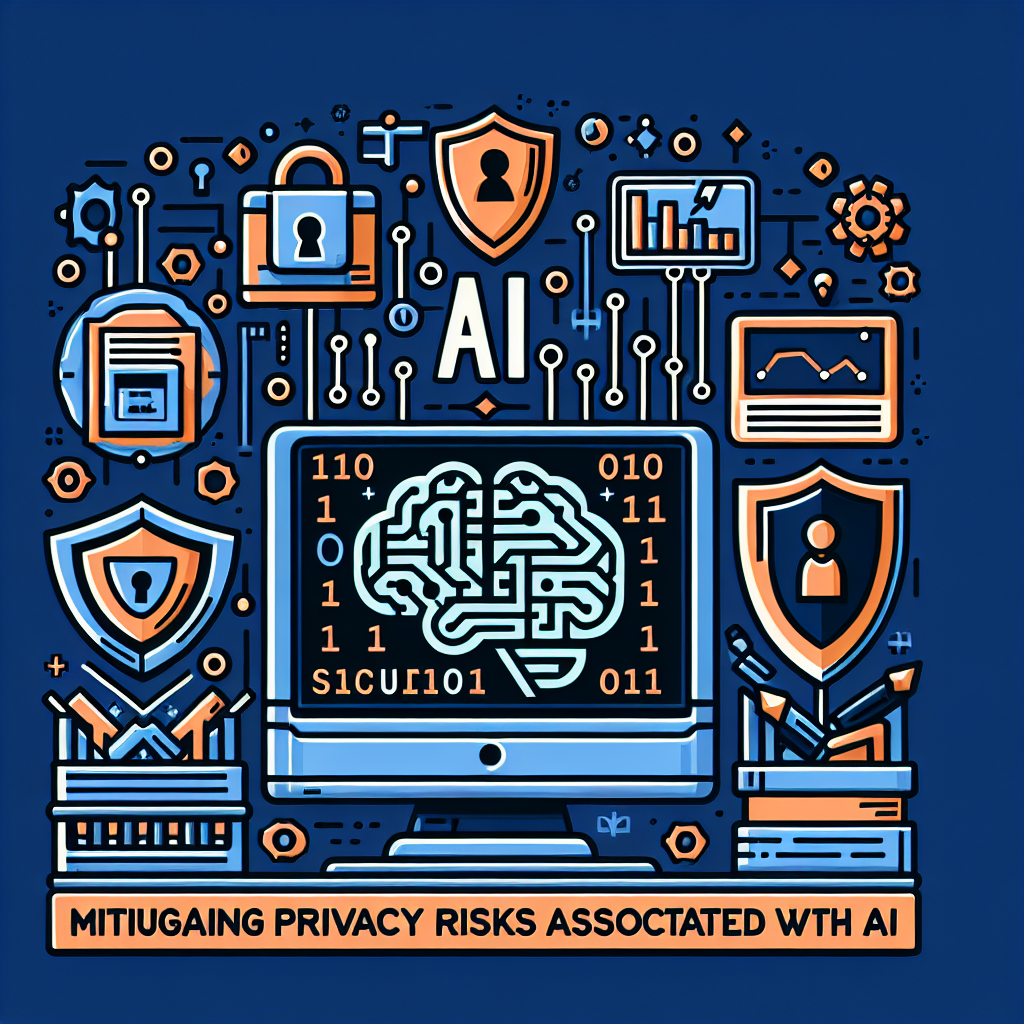In recent years, artificial intelligence (AI) has become an integral part of our daily lives, from virtual assistants like Siri and Alexa to personalized recommendations on streaming platforms and social media. While AI has the potential to revolutionize industries and improve efficiency, it also raises concerns about privacy and data security.
As AI systems collect and analyze vast amounts of data to make decisions and predictions, they have access to sensitive information about individuals, raising the risk of privacy breaches. This has led to calls for increased regulation and oversight of AI technologies to protect user privacy. In this article, we will explore the privacy risks associated with AI and discuss strategies for mitigating these risks.
Privacy Risks Associated with AI
There are several key privacy risks associated with AI that individuals and organizations need to be aware of:
1. Data Breaches: AI systems rely on large datasets to train and improve their performance. If these datasets are not properly secured, they can be vulnerable to data breaches, exposing sensitive information about individuals to unauthorized parties.
2. Biased Algorithms: AI algorithms are designed to make decisions based on patterns in data. However, if the training data is biased or incomplete, the algorithm may produce biased or discriminatory outcomes, leading to privacy violations for certain groups of individuals.
3. Profiling and Tracking: AI systems can be used to track and profile individuals based on their online behavior, preferences, and demographics. This information can be used for targeted advertising, but it also raises concerns about surveillance and invasion of privacy.
4. Inference Attacks: AI systems can infer sensitive information about individuals even if that information is not explicitly provided in the data. For example, an AI model may be able to predict an individual’s sexual orientation or medical condition based on seemingly innocuous data points.
5. Lack of Transparency: AI algorithms are often complex and opaque, making it difficult for individuals to understand how their data is being used and processed. This lack of transparency can erode trust and lead to privacy concerns.
Mitigating Privacy Risks
To mitigate the privacy risks associated with AI, individuals and organizations can take several steps to protect sensitive information and ensure data security:
1. Data Minimization: Collect and store only the data that is necessary for the AI system to perform its function. Minimizing data collection reduces the risk of data breaches and limits the amount of sensitive information that can be exposed.
2. Privacy by Design: Incorporate privacy considerations into the design and development of AI systems from the outset. Implement privacy-enhancing technologies such as encryption, anonymization, and access controls to protect user data.
3. Data Protection Impact Assessments: Conduct regular assessments to identify and mitigate privacy risks associated with AI systems. Assess the potential impact of data processing activities on individuals’ privacy rights and take steps to address any vulnerabilities.
4. Transparency and Accountability: Be transparent about how data is collected, used, and shared by AI systems. Provide individuals with clear information about their privacy rights and how they can exercise control over their data.
5. Ethical Use of AI: Ensure that AI systems are used ethically and responsibly, taking into account the potential impact on individuals’ privacy and rights. Establish clear guidelines for the use of AI technologies and monitor their implementation to prevent misuse.
6. User Consent: Obtain explicit consent from individuals before collecting or processing their personal data. Allow users to opt out of data collection and provide them with options to control the use of their information.
7. Data Security Measures: Implement robust security measures to protect data against unauthorized access, disclosure, and manipulation. Encrypt sensitive data, monitor access to data, and regularly update security protocols to prevent data breaches.
8. Compliance with Regulations: Stay informed about relevant privacy laws and regulations that govern the use of AI technologies. Ensure compliance with data protection regulations such as the General Data Protection Regulation (GDPR) and the California Consumer Privacy Act (CCPA).
FAQs
Q: What are the potential consequences of privacy breaches in AI systems?
A: Privacy breaches in AI systems can lead to unauthorized access to sensitive information, identity theft, financial fraud, and reputational damage for individuals and organizations. They can also result in legal consequences and regulatory penalties for non-compliance with data protection laws.
Q: How can individuals protect their privacy when using AI technologies?
A: Individuals can protect their privacy by being cautious about sharing personal information online, using privacy settings on social media platforms, and regularly reviewing and updating their privacy preferences. They can also use privacy-enhancing tools such as ad blockers and VPNs to protect their online activities.
Q: What role do regulators play in mitigating privacy risks associated with AI?
A: Regulators play a crucial role in overseeing the use of AI technologies and enforcing data protection laws to protect individuals’ privacy rights. They set standards for data security and privacy compliance, investigate privacy violations, and impose fines and sanctions on organizations that fail to protect user data.
Q: How can organizations build trust with users when using AI?
A: Organizations can build trust with users by being transparent about their data practices, providing clear information about how AI technologies are used, and giving users control over their data. They can also demonstrate a commitment to ethical use of AI and accountability for protecting user privacy.
In conclusion, mitigating privacy risks associated with AI requires a multi-faceted approach that involves data minimization, privacy by design, transparency, and accountability. By implementing privacy-enhancing measures and ethical guidelines, organizations can protect sensitive information and build trust with users. Individuals can also take proactive steps to protect their privacy when using AI technologies. By working together to address privacy concerns, we can harness the benefits of AI while safeguarding privacy rights.

